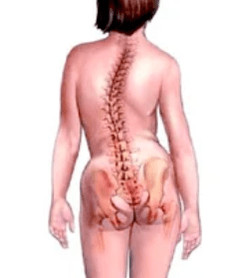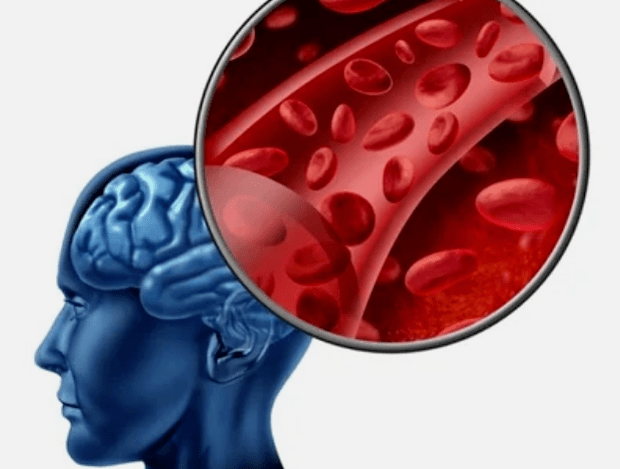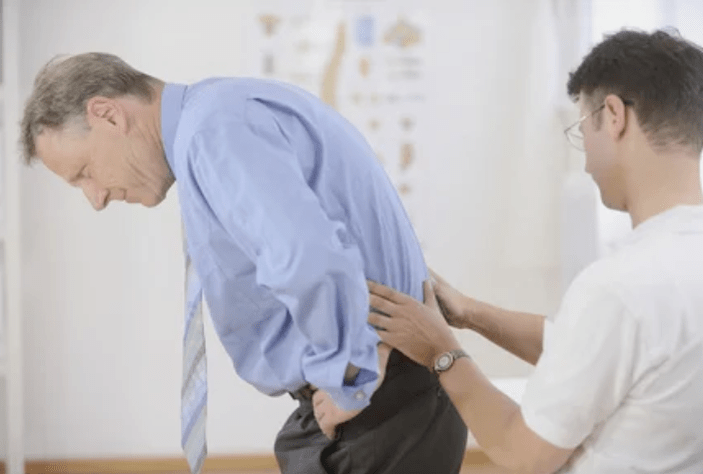Cervical area osteochondrosis is a serious pathology, characterized by degenerative-dystrophic changes in the intervertebral disc structure. These violations often lead to harmful complications. Therefore, it is strictly forbidden to ignore it. To overcome the disease, you should consult a specialist on time.

The essence of the pathology
Cervical spinal osteochondrosis is a pathology in which soft intervertebral pulp is converted into bone tissue. This causes pinching of blood vessels and nerve fibers.
Characteristics of the disease features include pain syndrome. It is located on the neck, shoulders, upper back, head. Many patients face dizziness, pressure fluctuations, nausea, lack of air.
Distropic changes in the cervical area are usually available in middle age and older. This is due to the vertical position of the frame and the feature of the load distribution.
The doctor notes that the disease occurs in men. This happens at 45-50 years. Women face the manifestation of cervical osteochondrosis later-in 50-55 years.
Cause
Various factors lead to the development of the form of the disease. The main causes of cervical osteochondrosis include the following:
- Insufficient physical activity. People who live an inactive lifestyle have experienced muscle deficiency -backbone that supports the spine. The deposition of salts arising from lactic acid can worsen this condition. The weak spinal column is easily defective and less portable.
- Obesity. Excessive weight loss is a huge danger to the musculoskeletal system. In addition to increased load on the spine, adipose tissue takes the beneficial substances needed to maintain muscle and cartilage tone.
- Stay long in a non -moving position. The disease is often found in drivers and people involved in intellectual labor. After prolonged accommodation in a blocked state, the cartilaginus gradually loses elasticity. Over time, the intervertebral disc has an improper configuration.
- Nutrition disorders. In order for the body to function properly, protein, fat, minerals and vitamins should be present in a diet in sufficient quantities. Irrical nutrition causes a violation of tissue structure and leads to their rapid destruction.
- Back damage. This can lead to the distribution of pressure to the cartilage, which causes changes in its structure and shape.
- Pathology of the musculoskeletal system. This category includes scoliosis, rheumatism, bone tuberculosis.
Often, cervical osteochondrosis is the result of hereditary tendencies. In this case, the pathology develops without the influence of important factors.
To prevent the appearance of the disease, you need to start therapy on time.

Stage of disease
There are several stages of pathology, each characterized by certain features:
- The first - the main feature of the state is spinal instability. It shows itself in the initial wound of the intervertebral disc;
- The second - the main manifestation is the highlight. This condition is characterized by a decrease in cracks between the vertebrae, the gradual violation of the integrity of the fibrous ring. There is usually pain caused by nerve compression;
- The third - at this stage, the fibrous ring has been completely destroyed. This requires intervertebral hernia. This condition is characterized by severe damage to the spine;
- The fourth is the hardest. At this stage, with any movement, acute pain occurs. Sometimes the situation improves, but this shows the appearance of bone structure that connects the vertebra. This requires a decrease in motor activity and causes defects.
Symptom
This form of osteochondrosis is characterized by special manifestations. This is due to the close location of the cervical vertebra and low disc height. Therefore, even small changes cause serious manifestations. In addition, these forms of osteochondrosis are often accompanied by compression of the cerebrospinal root.
Symptoms of cervical osteochondrosis include the following:
- Sore. They are located in various areas - back of the head, neck, shoulder belt, hands. The discomfort in the hands or shoulder straps is caused by pinching the nerves. Pain syndrome in the occipital zone is associated with neck muscle tissue spasms and blood circulation disorders.
- Disadvantages in hand. This sign is caused by damage to the motor nerve responsible for the preservation of the hand muscles.
- Disadvantages of sensitivity in hand. This feature is caused by damage to the root, which includes sensitive fibers responsible for the preservation of the skin.
- Reduces neck motor activity, crisis appearance. Symptoms -Symptoms of cervical spinal osteochondrosis are the result of a decrease in disc height. They are also defeated by the intervertebral joints and the formation of bone growth in the vertebra.
- Disadvantages, loss of movement coordination and dizziness. This manifestation is caused by damage to the vertebral artery. The formation of fibrous tissue and the displacement of the vertebra causes problems with the blood flow to the artery. As a result, there is a deterioration of blood flow in the occipital area of the brain and cerebellum.
- Hearing deterioration, numbness, visual acuity weakness. Symptoms -Cervical spinal osteochondrosis symptoms are due to deterioration of condition and development of cerebral circulation disorders.
Diagnostic method
To identify neck osteochondrosis, you need to perform some diagnostic procedures.The most informative studies include the following:
- Magnetic resonance imaging is the most informative study that allows you to evaluate the state of the vertebra and disc between them. Also, with the help of this procedure, it is possible to detect hernia, evaluate their size and localization.
- X -ray - This procedure is one of the most affordable research methods. However, it is often inactive, especially in the last stage of the disease.
- Calculated tomography - allows you to identify the presence of changes in vertebral structure. However, the presence of hernia or spinal cord compression to be diagnosed in this way is difficult.
- Duplex ultrasound scanning - helps detect blood flow disorders in the vertebral artery. This procedure allows you to detect barriers and moisture of blood flow in the vessel.
Method of treatment
Treatment of cervical osteochondrosis is selected taking into account a variety of factors. This is done depending on the level of the disease, the form of the disease, the severity of the symptoms.
The main methods of therapy include the following:
- Conservative therapy - can be drugs instead of -Drug;
- Surgical intervention;
- A combination of conservative methods and surgical treatment.
Physiotherapy method
Treatment of cervical spinal osteochondrosis requires the use of the main method of physiotherapy.
The most effective procedures include the following:
- Electrophoresis uses drugs. Under the influence of electric current, drug particles penetrate the desired area. Eufillin and novocaine are used for procedures. Thanks to this, it is possible to stimulate blood circulation and achieve analgesic effects.
- Ultrasound exposure. Thanks to this procedure, it is possible to overcome pain and stop inflammation. This technique also activates the metabolic processes in the body.
- Magnetotherapy. With its help, it is possible to overcome edema and achieve analgesic effects.
- Laser exposure. This method helps normalize blood circulation and helps to overcome inflammation.
The most effective training should include the following:
- Lying on the stomach, resting your hands on the floor, lifting your head and trunk. Need to make sure that the back remains straight. In this position, it should remain 1-2 minutes. Then be careful to sink to the floor. Make 2-3 repetition.
- Lie on your stomach, stretch your hands, rotate your head to the left and touch your ear to the floor. The same movement to do to the right. Do 6-7 times in each direction.
- Sit down and, take a deep breath, bend down. Touch the chest with a chin. After that, breathe, turn back, throw his head. Doing 10-15 repetition.
- Sit down, put your palm on your forehead. Press your head in your arm for 30 seconds. Overall, you need to make a 2-3 repetition.
- Slowly rotate your head in different directions. In each direction, you need to make 10 rotations. When dizziness appears, training must be stopped.

Massage
To eliminate the signs of cervical osteochondrosis, you definitely need to do a sequence. This procedure must be carried out carefully, without making an effort. Movements need to be extended to the neck, collar sites and back areas.
It is best to do a sequence in a position to lie on the stomach.In extreme cases, sitting procedures are allowed.
This technique is based on the use of the technique:
- Encourage - shows the effect on the surface area of the skin. To do this, the palm of your hand or the tip of your finger needs to knock the back, moving from the head to the top. You can also make zigzag movements.
- Squeezing - consists of effects on the area of the skin at the top of the back. To do this, with the thumb and index, the skin is caught. This should be done carefully, without affecting the fabric in the vertebrae.
- Rubbing - a procedure is performed to heat the skin and improve blood circulation in the collar area. It should be done very carefully, without affecting the spinus vertebra.
- Kneading - quite rarely, as it shows the effect on deep fabric. This can only worsen anomalies.
With osteochondrosis, yourself can be done.To do this, it is easy to sit and use the method of rubbing and rubbing the neck and shoulders. It is advisable to increase the procedure by rubbing ointment that contributes to increased blood flow and relieves pain in the affected area.
Surgical
Performing surgical intervention is shown in the following cases:
- The presence of neurological deviations is a violation of motor activity, weakness or loss of hand sensitivity, loss of control over water removal. When such symptoms appear, you may suspect persistent damage to the nerves. Therefore, it is very important to carry out operations to eliminate compression.
- The presence of persistent pain, which violates one's quality of life and cannot be eliminated by conservative methods.
With the development of cervical osteochondrosis, the following operations can be performed:
- Discoctomy front and spondylodeza. The operation is performed through the front surface of the neck. This procedure is intended to remove the affected disc, nerve fiber compression and special device implantation to maintain the desired distance between the vertebrae.
- Replace the intervertebral disc. In this case, the affected disc is removed, and instead is made of artificial. Thanks to this procedure, it is possible to maintain motor activity.
Handling surgical intervention to eliminate neurological symptoms has high efficiency. According to a separate estimate, it is 80-90 %. However, such methods are not effective enough to eliminate pain associated with osteochondrosis.
The possibility of danger
Cervical osteochondrosis is a serious type of pathology. In this spinal area, there are many nerves and vessels responsible for brain nutrition. In addition, the cervical vertebrae fits tightly. Therefore, even small changes in this area cause or displacement of blood vessels and nerves.
Disorders of cerebral blood flow cause the appearance of migraines, vegetable dystonia, hypertension. There is also a risk of problems in the functioning of the respiratory system, heart and blood vessels. Many people are disturbed by hearing, visual acuity decreases, coordination of movement suffering.
In difficult situations, cervical osteochondrosis causes vertebral artery syndrome. The vessel is responsible for blood supply to cerebellum and oval brain. With arterial compression, there is a risk of brain ischemia and the development of spinal stroke.
Also, pathology can cause damage to the nerve roots. This is shown in the form of growth formation, radiculopathy appearance, loss of motor activity. The most difficult consequences of the disease are the spinal cord compression, which can cause fatal outcomes.
Prevention
To prevent pathological development, it should observe simple rules:
- Systematically playing sports;
- Eat properly;
- Take the preparation of vitamins and chondroprotectors prescribed by your doctor;
- Avoid staying in an uncomfortable position;
- Use orthopedic furniture;
- Choose clothes and shoes for the season, especially in winter.
Cervical osteochondrosis is a relatively dangerous disease that can cause negative health consequences.
To avoid serious complications, you should consult your doctor on time and clearly follow the recommendation.

























